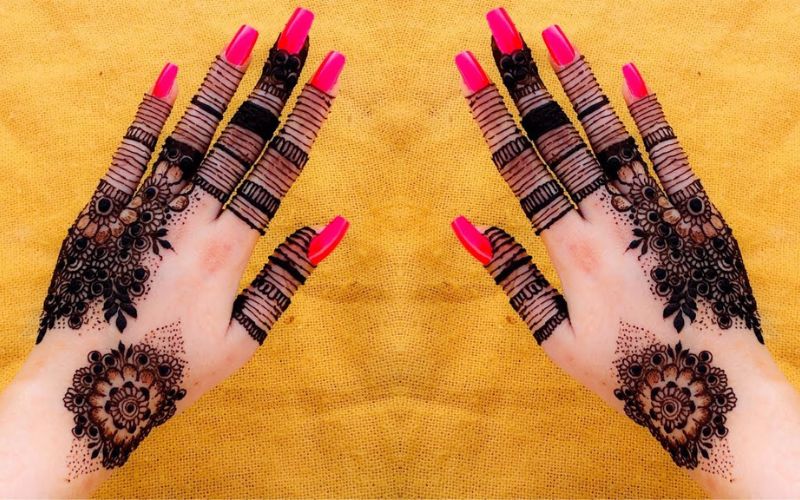Mehandi, also known as henna, is a form of body art that has been practiced for centuries across various cultures, particularly in South Asia, the Middle East, and North Africa. The intricate patterns and designs created with mehandi are not only aesthetically pleasing but also hold cultural and traditional significance. This article delves into the evolution of mehandi designs, with a focus on the contemporary trend represented by the keyword “stylish mehandi design.”
The Historical and Cultural Roots of Mehandi
Mehandi has a rich history that dates back over 5,000 years. It is believed to have originated in ancient Egypt, where it was used for cosmetic and medicinal purposes. The art of mehandi later spread to India, Pakistan, and the Middle East, where it became an integral part of various cultural and religious ceremonies. Traditionally, mehandi is applied during weddings, festivals, and other significant life events as a symbol of joy, beauty, and prosperity.
The Evolution of Mehandi Designs
Over the centuries, mehandi designs have evolved, reflecting the changing tastes and preferences of different generations. Initially, designs were simple and symbolic, featuring motifs such as flowers, leaves, and geometric patterns. However, as the art form spread and evolved, the designs became more intricate and elaborate.
In India, the Mughal era brought a significant transformation in mehandi designs. The Mughals introduced more detailed and delicate patterns, incorporating motifs such as peacocks, paisleys, and intricate floral designs. These intricate designs are still popular today and are often referred to as “traditional” or “classical” mehandi designs.
Contemporary Mehandi Designs: The Stylish Trend
In recent years, mehandi designs have witnessed a modern twist, blending traditional elements with contemporary styles. The keyword “stylish mehandi design” epitomizes this trend, representing a fusion of classical motifs with modern aesthetics. This new wave of mehandi designs caters to the preferences of the younger generation, who seek unique and fashionable patterns.
1. Minimalist Mehandi Designs
Minimalism is a prevailing trend in various forms of art and design, and mehandi is no exception. Minimalist mehandi designs focus on simplicity and elegance, using fewer elements to create a sophisticated look. These designs often feature thin lines, small motifs, and ample negative space, making them ideal for those who prefer a subtle and chic appearance.
2. Geometric Patterns
Geometric patterns have gained immense popularity in contemporary mehandi designs. These designs incorporate shapes such as triangles, squares, and hexagons, arranged in repetitive or symmetrical patterns. Geometric mehandi designs offer a modern and edgy look, appealing to individuals who appreciate a more structured and abstract style.
3. Fusion Designs
Fusion mehandi designs combine elements from different cultures and artistic styles. For instance, a design might blend traditional Indian motifs with Arabic or Moroccan patterns, creating a unique and eclectic look. This trend reflects the global nature of contemporary fashion, where cultural boundaries are increasingly blurred.
4. Florals with a Twist
Floral motifs have always been a staple in mehandi designs. However, contemporary designs often give a new twist to these traditional patterns. This could involve incorporating modern elements such as geometric shapes, watercolor effects, or even 3D embellishments. The result is a fresh and innovative take on classic floral designs.
5. Jewelry-Inspired Designs
Jewelry-inspired mehandi designs mimic the appearance of intricate jewelry pieces such as bracelets, rings, and necklaces. These designs are particularly popular for bridal mehandi, as they create an illusion of wearing actual jewelry. The use of fine lines and detailed patterns makes these designs look incredibly elegant and sophisticated.
The Role of Social Media in Popularizing Stylish Mehandi Designs
The rise of social media platforms such as Instagram, Pinterest, and YouTube has played a crucial role in popularizing stylish mehandi designs. Artists and enthusiasts from around the world share their creations online, providing inspiration and tutorials for others. Hashtags like “#mehandidesign” and “#stylishmehandi” allow users to explore a vast array of designs and stay updated with the latest trends.
The Art of Applying Mehandi: Techniques and Tips
Creating a beautiful mehandi design requires skill, patience, and practice. Here are some techniques and tips for achieving stunning mehandi designs:
1. Preparing the Mehandi Paste
The quality of the mehandi paste is crucial for achieving a dark and long-lasting stain. Fresh mehandi powder should be mixed with a liquid (usually lemon juice or tea) and left to rest for several hours to release the dye. Essential oils such as eucalyptus or lavender can be added to enhance the color and fragrance.
2. Using the Right Tools
The application of mehandi requires precision, and using the right tools is essential. Traditional mehandi cones are commonly used, but some artists prefer using fine-tipped applicator bottles or brushes. The choice of tool depends on personal preference and the level of detail required in the design.
3. Practicing Basic Patterns
For beginners, it is helpful to start by practicing basic patterns such as lines, dots, and simple shapes. Once comfortable with these, more complex motifs and designs can be attempted. Practicing on paper before applying mehandi on the skin can also be beneficial.
4. Patience and Steadiness
Applying mehandi requires a steady hand and a lot of patience. It is important to work slowly and carefully, especially when creating intricate designs. Taking breaks if needed and maintaining a relaxed posture can help in achieving better results.
5. Aftercare for Long-Lasting Color
Proper aftercare is essential for ensuring a dark and long-lasting mehandi stain. Once the mehandi paste is applied, it should be left to dry for several hours. Afterward, the dried paste can be scraped off, and the area should be kept dry for at least 24 hours. Applying a mixture of lemon juice and sugar to the dried mehandi can help in darkening the stain.
The Significance of Mehandi in Modern Celebrations
Despite the evolving styles and trends, the cultural and traditional significance of mehandi remains strong. In modern celebrations, mehandi continues to be an important ritual, symbolizing joy, beauty, and prosperity. Whether it’s a grand wedding or a festive occasion, mehandi is a cherished tradition that brings people together and adds to the celebratory spirit.
1. Mehandi in Weddings
In Indian and Pakistani weddings, the mehandi ceremony is a significant pre-wedding event. The bride, along with her female relatives and friends, has intricate mehandi designs applied to her hands and feet. The mehandi is not only a form of adornment but also believed to bring good luck and blessings to the bride. Bridal mehandi designs are often elaborate, featuring motifs such as peacocks, flowers, and even portraits of the bride and groom.
2. Mehandi in Festivals
Festivals such as Diwali, Eid, and Karva Chauth are incomplete without the application of mehandi. Women and girls decorate their hands with beautiful designs as part of the festive celebrations. Mehandi is seen as a way to enhance beauty and express joy during these special occasions.
3. Mehandi in Contemporary Celebrations
In addition to traditional events, mehandi has found its place in contemporary celebrations as well. It is increasingly popular in events such as birthday parties, baby showers, and corporate gatherings. Mehandi artists are often hired to provide guests with temporary tattoos, adding a fun and artistic element to the celebrations.
Conclusion
Mehandi is a timeless art form that beautifully blends tradition with modernity. The keyword “stylish mehandi design” represents the contemporary trend of creating unique and fashionable mehandi patterns. From minimalist designs to geometric patterns and jewelry-inspired motifs, the world of mehandi continues to evolve, reflecting the changing tastes and preferences of people across the globe.
As we celebrate the beauty and significance of mehandi, it is essential to appreciate the skill and creativity of the artists who keep this tradition alive. Whether applied for cultural, religious, or personal reasons, mehandi remains a cherished form of self-expression and adornment, bridging the past and the present with its intricate and captivating designs.



